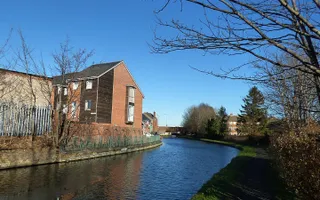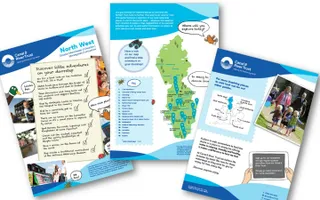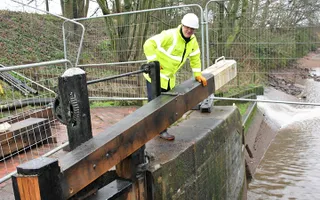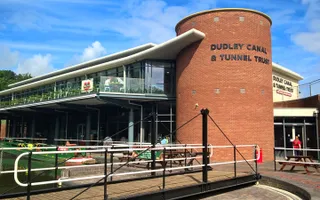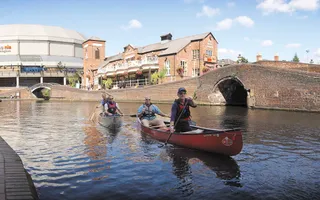Birmingham Canal's historic Old Main Line was partly replaced by Thomas Telford’s arrow-straight New Main Line, leaving peaceful looping backwaters, like manmade oxbow lakes.
Many of these are still open to boats and walkers, although some are no longer navigable. While those in a hurry head straight down the main line, if you have time to explore, these waters provide a fascinating diversion.
The canal takes you from Birmingham to Wolverhampton, through Black Country scenery that is rich in industrial history. The Black Country Living Museum is a great family day out – a recreation of a 19th-century industrial town, including canal docks and boat trips.
On a trip along the Old Main Line, you can spot the New Main Line in the cutting below, as well as the Titford Canal, Engine Arm and Netherton Tunnel Branch.
Nearby days out
With the number of walking, canoeing and cycle routes increasing, you'll find plenty of places to take time out or rejuvinate your senses along our waterways. Here's a featured destination on the Old Main Line:
The history of the Old Main Line
Coal was being carried on James Brindley's canal from Wednesbury into the City of Birmingham in 1769 and by 1772 the line was open through to Aldersley near Wolverhampton, proving profitable almost from the start. Built to Brindley's contour method, in which the water level followed where possible the contours of the landscape, it was a meandering route of more than 22 miles.
Various modifications and improvements quickly followed; the section between Smethwick and Spon Lane was originally built on a level of 491 feet above sea level, with six locks at Smethwick and three leading down to the 473 feet level at Spon Lane. This arrangement wasted much precious water and in the 1780s the engineer Smeaton, who was also responsible for Eddystone Lighthouse, lowered it to the 473 feet level. An approximate indication of the old level can be gained from looking over Brasshouse Bridge to where the New Main Line and Old Main Line are overshadowed by an embankment.
The Engine Arm is a feeder that crosses Telford's later New Main Line on the elegant cast iron Telford Aqueduct. The arm takes its name from the first Boulton & Watt engine to be installed by the Birmingham Canal Company; it pumped water between the levels before being moved first to mine workings at Ocker Hill thence the Birmingham Science Museum.
Toccy bricks
The locks at Titford, known locally as the Crow Flight after a local benefactor, give access to Titford Reservoir and various branches. At Tividale the Old Main Line crosses the Netherton Tunnel Branch on Tividale Aqueduct. Here, you'll see mainly blue engineering bricks; known locally as ‘toccy bricks', they were made from Staffordshire clay and baked in the hottest part of the oven rendering them virtually impervious to water.
At Tipton the line makes a junction with the Dudley Canal near the northernmost portal of Dudley Tunnel. From Factory Junction, named after a long-vanished soap works, the route to Wolverhampton now continues via the New Main Line.


